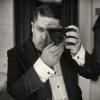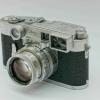-
Recently Browsing 0 members
- No registered users viewing this page.
-
Similar Content
-
Motion blur
By Ecar,
- 1 reply
- 278 views
-
- 1,370 replies
- 156,296 views
-
- 54 replies
- 2,504 views
-
- 17 replies
- 494 views
-
- 9 replies
- 953 views
-





Recommended Posts
Join the conversation
You can post now and register later. If you have an account, sign in now to post with your account.
Note: Your post will require moderator approval before it will be visible.